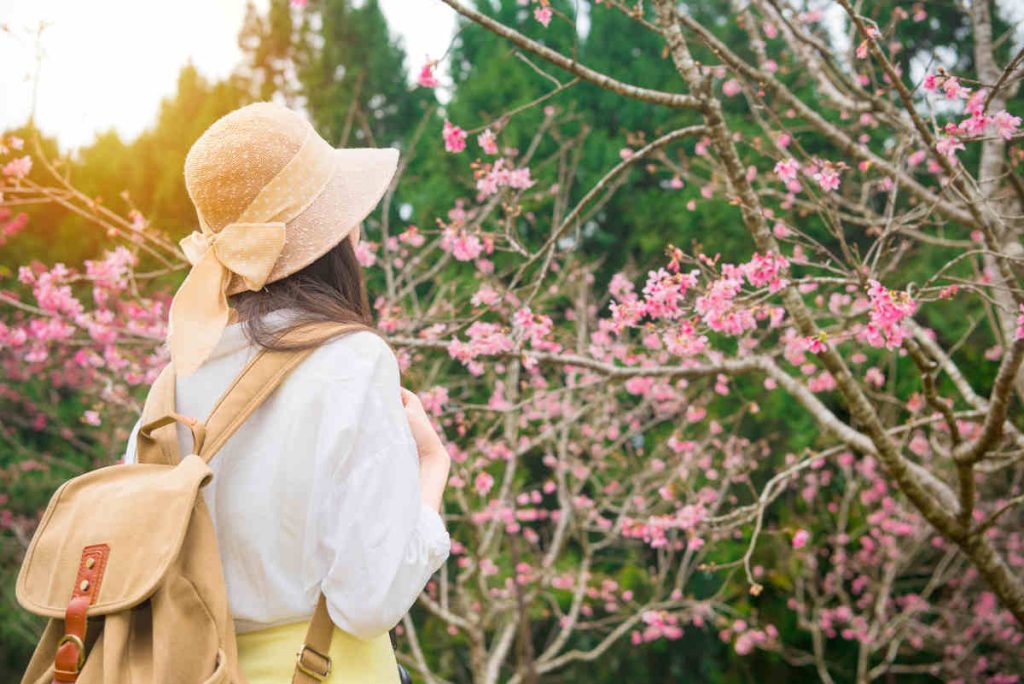Springtime in China heralds the arrival of blooming flowers, mild weather, and a sense of rejuvenation after the winter chill. As the country awakens to warmer temperatures and longer days, travelers are greeted with a myriad of vibrant activities to explore and enjoy.
From witnessing the ethereal beauty of cherry blossoms to immersing oneself in cultural festivities and embarking on outdoor adventures, there’s something for every traveler to experience during this enchanting season. Imagine:
- Hiking amidst the emerald embrace of Yunnan’s rice terraces, where every step unveils a breathtaking panorama.
- Wandering through ancient villages cradled in the Himalayas, their colorful houses adorned with vibrant prayer flags.
- Cruising down the Li River in Guilin, mesmerized by the karst peaks that rise like mythical dragons from the mist.
- Strolling through Beijing’s imperial gardens, their blossoming peonies and delicate willows whispering tales of emperors past.
- Savoring the flavors of spring at a local food market, indulging in fresh seasonal delicacies and aromatic street food.
- Witnessing the vibrant spectacle of a temple fair, where vibrant costumes, lively music, and traditional performances fill the air.
But that’s just a taste of the possibilities. In the coming sections, we’ll delve deeper into these experiences and uncover hidden gems, catering to every travel style and interest. So, pack your sense of adventure, lace up your walking shoes, and prepare to be enchanted by the magic of spring in China!
Cherry Blossom Viewing
Cherry blossoms, known as “Yīnghuā” in Chinese (樱花), paint the landscape with their delicate pink and white hues, creating a breathtaking spectacle that draws visitors from around the world. From sprawling urban parks to remote countryside landscapes, cherry blossoms can be found in abundance across China during the spring season.
Whether you’re strolling through a bustling city or wandering along tranquil riversides, the sight of cherry blossoms in full bloom is sure to captivate your senses and leave you in awe of nature’s beauty.

Best Locations for Cherry Blossom Viewing
- Yuantouzhu Park, Wuxi
 : Boasting over 30,000 cherry trees, this park explodes in a sea of blossoms, earning it the title of “World’s Top 3 Sakura Viewing Destinations.” Imagine strolling beneath a canopy of delicate blooms or renting a boat to drift serenely under a shower of petals.
: Boasting over 30,000 cherry trees, this park explodes in a sea of blossoms, earning it the title of “World’s Top 3 Sakura Viewing Destinations.” Imagine strolling beneath a canopy of delicate blooms or renting a boat to drift serenely under a shower of petals. - Zhongshan Park, Qingdao
 : This seaside park offers a unique blend of cherry blossoms and ocean views. Take a leisurely walk along the coast, breathing in the salty air and the sweet fragrance of the blossoms, creating a picture-perfect spring moment.
: This seaside park offers a unique blend of cherry blossoms and ocean views. Take a leisurely walk along the coast, breathing in the salty air and the sweet fragrance of the blossoms, creating a picture-perfect spring moment. - Gucun Park, Shanghai
 : Escape the city’s hustle and bustle in this haven of tranquility. Wander through winding paths lined with cherry trees, their branches forming a tunnel of delicate blooms. Don’t miss the annual Cherry Blossom Festival, a vibrant celebration with cultural performances and delicious food stalls.
: Escape the city’s hustle and bustle in this haven of tranquility. Wander through winding paths lined with cherry trees, their branches forming a tunnel of delicate blooms. Don’t miss the annual Cherry Blossom Festival, a vibrant celebration with cultural performances and delicious food stalls. - Kunming, Yunnan
 : Immerse yourself in the “Spring City” as its numerous parks and streets erupt in a display of cherry blossoms. Yuantongshan Park is one of Kunming’s most famous springtime attractions. Yuantongshan Park, which has over 480 Yunnan cherry trees and 200 Japanese cherry trees, draws tens of thousands of visitors each year.
: Immerse yourself in the “Spring City” as its numerous parks and streets erupt in a display of cherry blossoms. Yuantongshan Park is one of Kunming’s most famous springtime attractions. Yuantongshan Park, which has over 480 Yunnan cherry trees and 200 Japanese cherry trees, draws tens of thousands of visitors each year.
Tips for Capturing Stunning Photos
To capture the beauty of cherry blossoms in photographs, consider visiting during the early morning or late afternoon when the light is soft and golden, enhancing the ethereal quality of the blossoms.
Experiment with different angles and compositions to showcase the delicate petals against contrasting backgrounds. Close-up shots highlighting individual blossoms can be just as captivating as wide-angle views of entire trees in bloom. Don’t forget to pack a tripod for stable shots, and be patient as you wait for the perfect moment to capture nature’s splendor.
Remember: Respect the blossoms and the environment. Avoid shaking the trees or picking flowers, and follow park regulations to ensure everyone enjoys the beauty responsibly.
Related reading: Spring Vacations in China: Best Places to Visit – Things to Do – Travel Tips – Opens in new tab
Spring Festivals
Spring in China is not only a season of natural beauty but also a time for vibrant cultural celebrations and festivities. Across the country, communities come together to honor ancient traditions, celebrate the changing of the seasons, and usher in new beginnings.
From solemn rituals to lively parades, spring festivals offer travelers a unique opportunity to immerse themselves in China’s rich cultural heritage and experience the warmth and hospitality of its people.
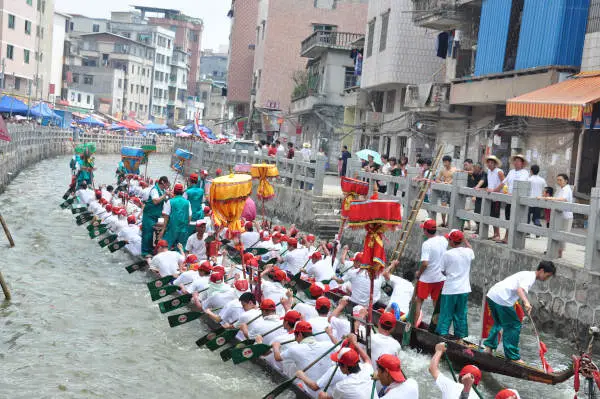
Highlighting traditional celebrations during Spring
Two of the most prominent spring festivals in China are the Qingming Festival (Tomb-Sweeping Day) and the Dragon Boat Festival.
Qingming Festival: Honoring Ancestors and Renewing Life
- Dates: Around April 5th
- Significance: A time to honor deceased ancestors and celebrate the renewal of life.
- Experience: Visit family graves with offerings of fresh flowers, food, and incense. Witness the ritual of “willow branch swapping,” symbolizing warding off evil spirits and welcoming good fortune. Enjoy family gatherings and delicious spring dishes like spring rolls and Qingtuan (glutinous rice balls filled with sweet bean paste). (Related reading: Ching Ming Festival -Tomb Sweeping Day (History, Legend, and Traditions)).
Dragon Boat Festival: A Race of Paddles and Dumplings:
- Dates: Fifth day of the fifth lunar month (usually falls in May or June)
- Significance: Commemorates the poet Qu Yuan and celebrates unity and perseverance.
- Experience: Watch thrilling dragon boat races, the rhythmic drumming and synchronized paddling creating a mesmerizing spectacle. Savor delicious zongzi (粽子), pyramid-shaped dumplings filled with rice, meat, and other ingredients, wrapped in bamboo leaves. Immerse yourself in the festive atmosphere with colorful decorations, traditional performances, and the aroma of glutinous rice wafting through the air. (Related reading: Chinese Dragon Boat Festival (Origins and Traditions))
Participate in local customs and rituals
During spring festivals, travelers have the opportunity to participate in various local customs and rituals, from flying kites and dragon boat racing to making traditional snacks like sweet dumplings and rice cakes.
Engaging with locals and joining in their festivities not only provides insight into Chinese culture but also fosters connections and creates lasting memories. Whether you’re exploring ancient temples, attending colorful parades, or sampling festive delicacies, spring festivals in China are sure to leave a lasting impression on travelers from all walks of life.
Related reading: The Complete Packing List for Your Spring Vacation in China – Opens in new tab
Hiking Adventures
Spring in China offers the perfect weather for outdoor enthusiasts to lace up their hiking boots and explore the country’s diverse landscapes. With temperatures warming up and nature coming to life, it’s an ideal time to venture into the great outdoors and discover breathtaking vistas, lush forests, and picturesque trails.
Whether you’re an experienced hiker or a novice adventurer, there’s a hiking experience for everyone to enjoy amidst the beauty of springtime in China.
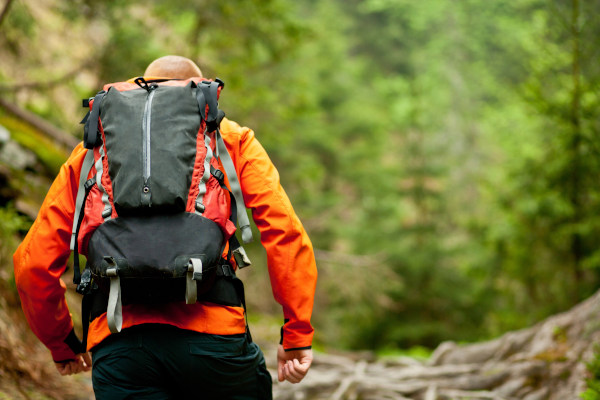
Explore scenic trails in destinations like Zhangjiajie and Huangshan
Two of the most renowned hiking destinations in China are Zhangjiajie and Huangshan, both offering stunning natural scenery and unforgettable hiking experiences.
Zhangjiajie: A Journey into Jurassic Park:
Zhangjiajie National Park, the inspiration for the floating mountains in Avatar, is a hiker’s paradise. Ascend the iconic Golden Whip Stream Bridge, wander through the Emerald Pool, and marvel at the towering sandstone pillars that jut into the sky.
The Wulingyuan Scenic Area offers a variety of trails, from easy walks to challenging climbs, ensuring there’s something for every level of hiker.
Huangshan: A Tapestry of Colors and Beauty
Huangshan, or Yellow Mountain, is renowned for its unique granite peaks, pine forests, and colorful sunrises. Hike the Heavenly Stairway, a challenging but rewarding trail that leads to the summit of the highest peak, and witness the mesmerizing sunrise over the valley below.
Explore the Jade Lake, surrounded by towering peaks and emerald waters, and immerse yourself in the serene beauty of this natural wonderland.
Insider tips for a safe and enjoyable hiking trip
- Planning: Research your chosen trails, check weather forecasts, and choose routes appropriate for your fitness level. Book accommodations and transport in advance, as some popular trails get crowded during the peak season.
- Equipment: Pack essential hiking gear like sturdy shoes, comfortable clothing, a backpack, a map or GPS device, and plenty of water and snacks. (Aff.links)
- Permits and Regulations: Check if permits are required for certain trails or areas, and follow all local regulations and safety guidelines.
- Leave No Trace: Respect the environment by minimizing your impact. Carry out all trash, stay on designated trails, and dispose of waste properly.
- Be Prepared: Inform someone of your itinerary and expected return time, and carry a personal locator beacon or emergency whistle.
- Listen to Your Body: Pace yourself, and take breaks when needed. Don’t push yourself beyond your limits, and be aware of the signs of altitude sickness or fatigue.
🧧 Use our free “ChinaGoGuide” app. Your personal guide to your journey to China. Try it now!
Tea Plantation Tours
Tea has been an integral part of Chinese culture for thousands of years, revered not only for its aromatic flavors but also for its health benefits and cultural significance. Spring is an ideal time to explore China’s tea plantations and immerse yourself in the ancient art of tea cultivation.
From lush hillsides to terraced fields, tea plantations offer travelers a glimpse into the traditional methods and practices of growing and harvesting tea, as well as the opportunity to savor freshly brewed cups of tea amidst the serene beauty of the countryside.
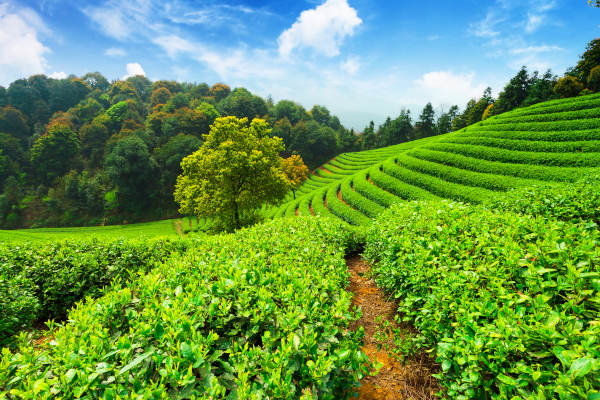
Visit renowned tea plantations in Hangzhou and Fujian
Two of the most renowned regions for tea cultivation in China are Hangzhou and Fujian, each offering unique varieties and flavors of tea.
Hangzhou: A Journey Through the Dragon Well Legacy:
Nestled amidst the picturesque West Lake region, Hangzhou boasts a rich history of tea cultivation. Visit the Longjing Village (龙井村), the birthplace of Longjing tea, a renowned green tea known for its flat, emerald leaves and delicate, slightly nutty flavor.
Witness the meticulous hand-picking process, learn about the unique roasting technique, and indulge in a traditional tea ceremony, savoring the subtle nuances of this prized tea.
Fujian: Unveiling the Wuyi Oolong Mystique:
Venture into the breathtaking Wuyi Mountains of Fujian Province, home to the world-famous Wuyi Oolong teas (Aff.link). Explore the UNESCO World Heritage Site of Wuyishan Scenic Area, where tea plantations carpet the slopes and ancient tea houses whisper stories of generations past.
Witness the unique rock tea processing methods, including the iconic “roasting over charcoal” technique, and discover the diverse range of oolong teas, each boasting its own distinct aroma and flavor profile.
Learn about tea production processes and tasting techniques
Tea plantation tours offer more than just sightseeing. You can:
- Participate in traditional tea-making activities: Learn the art of tea leaf picking, withering, and pan-frying alongside experienced tea masters.
- Engage with local tea farmers: Gain insights into their way of life, their passion for tea cultivation, and the challenges and rewards of this ancient practice.
- Explore local tea markets: Immerse yourself in the vibrant atmosphere of tea markets, browse through a diverse selection of teas, and put your bargaining skills to the test.
- Participate in tea tasting sessions: Sample a variety of teas and learn how to appreciate the subtle nuances of flavor, aroma, and texture.
Related reading: 8 Summer Activities in China for Every Traveler – Opens in new tab
Cycling Adventures
Springtime in China beckons adventurers to explore its picturesque landscapes and charming villages from the saddle of a bicycle. Cycling offers a unique way to immerse oneself in the beauty of the countryside, allowing travelers to leisurely pedal through scenic routes, discover hidden gems off the beaten path, and connect with local communities along the way.
Whether you’re an avid cyclist or a casual rider, embarking on a cycling adventure in China promises unforgettable experiences and breathtaking views at every turn of the pedal.

Discover picturesque landscapes and quaint villages
From the terraced rice fields of Guilin to the ancient towns of Yangshuo, China is dotted with stunning landscapes and idyllic villages waiting to be explored by bicycle. Cyclists can meander along tranquil rivers, wind through lush bamboo forests, and pedal past centuries-old architecture, immersing themselves in the rich culture and natural beauty of the countryside.
Along the way, encounter friendly locals, stop for scenic picnics, and capture memorable moments amidst the serene surroundings of rural China.
Essential gear and route recommendations for cyclists
To ensure a safe and enjoyable experience, consider these essential tips:
- Gear Up: Invest in a comfortable bike, a helmet, and proper cycling attire. Pack essential tools for minor repairs and carry a first-aid kit. (Aff.links)
- Plan Your Route: Research your chosen route beforehand, considering the terrain, distance, and traffic conditions. Opt for marked bike lanes or quiet backroads, especially if you’re a beginner.
- Be Visible: Wear bright clothing and reflective gear, especially if cycling during low-light conditions.
- Hydrate and Rest: Carry a water bottle and regularly replenish fluids. Take breaks to rest and enjoy the scenery, avoiding fatigue and overheating.
Remember, responsible cycling includes respecting local traffic regulations, being mindful of pedestrians, and minimizing your environmental impact.
For cyclists seeking a guided experience, many tour operators offer organized cycling tours with knowledgeable guides, support vehicles, and pre-planned itineraries tailored to different skill levels and interests. Whether you prefer a leisurely ride through the countryside or a challenging ascent up mountainous terrain, there’s a cycling adventure in China suited to every preference and ability level.
Spring Culinary Delights
Spring awakens not just the landscape but also the culinary scene in China. From the vibrant green of freshly sprouted vegetables to the delicate sweetness of seasonal fruits, the season offers a cornucopia of flavors waiting to be explored.
Whether you’re exploring bustling food markets, dining at local eateries, or attending cooking classes, spring culinary delights offer a delectable journey through China’s diverse gastronomic landscape.
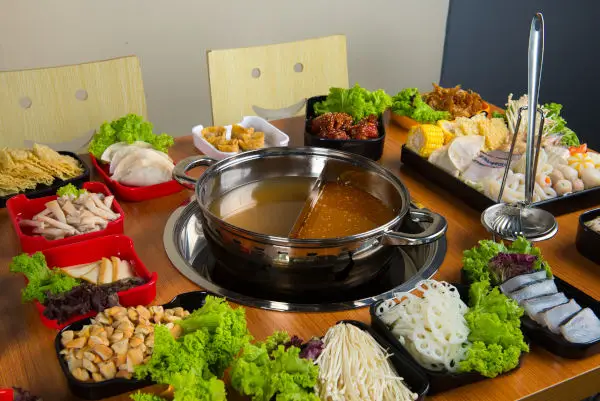
Sample specialties like spring rolls, bamboo shoots, and fresh seafood
One of the quintessential springtime dishes in China is the spring roll, a crispy and savory appetizer filled with a delicious combination of vegetables, meat, and sometimes seafood.
Other seasonal specialties include bamboo shoots, which are harvested in the spring and prized for their tender texture and delicate flavor. Whether stir-fried, steamed, or pickled, bamboo shoots are a versatile ingredient in Chinese cuisine, adding a refreshing crunch to soups, salads, and stir-fries.
Additionally, spring is an excellent time to indulge in fresh seafood, as fishermen bring in an abundance of crabs, prawns, and fish from the rivers, lakes, and seas surrounding China’s coastal regions.
Beyond the Plate: Culinary Experiences
For the culinary enthusiast, spring in China offers unique experiences beyond savoring delicious dishes:
- Cooking Classes: Immerse yourself in the art of Chinese cuisine by participating in a cooking class. Learn traditional techniques, practice preparing iconic spring dishes, and discover the secrets behind the unique flavors.
- Food Tours: Embark on a guided food tour and delve into the vibrant local markets, bustling street food stalls, and hidden culinary gems. Sample an array of spring specialties, interact with local vendors, and gain insights into the diverse food culture of China.
Remember, come with an open mind and a sense of adventure, as the true essence of Chinese cuisine lies in embracing the season’s bounty and savoring the stories each dish tells.
River Cruises
For travelers seeking a leisurely way to experience the beauty of China’s landscapes, a river cruise offers the perfect opportunity to sit back, relax, and take in breathtaking views along some of the country’s most iconic waterways.
Whether meandering along the mighty Yangtze River or drifting through the picturesque scenery of the Li River, a river cruise provides a tranquil escape from the hustle and bustle of city life, allowing passengers to immerse themselves in the natural splendor and cultural heritage of China’s waterways.
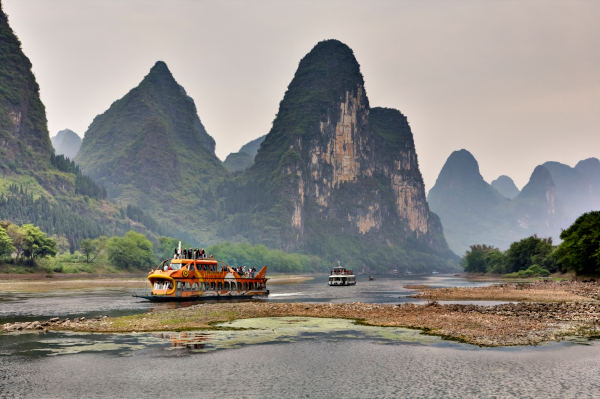
Unveiling the Majesty of the Yangtze:
Embark on an unforgettable voyage along the Yangtze River, China’s longest waterway. Witness the Three Gorges, a UNESCO World Heritage Site, where towering cliffs and verdant landscapes create a scene of unparalleled beauty. Explore the vibrant city of Chongqing, delve into the rich history of Yichang, and witness the magnificent Three Gorges Dam, a marvel of modern engineering.
Navigating the Enchanting Li River:
Immerse yourself in the serene beauty of the Li River, winding its way through the picturesque karst landscape of Guilin. Marvel at the dramatic limestone peaks that rise like mythical dragons and admire the lush rice paddies that carpet the valley floor. Visit traditional villages, explore ancient pagodas, and experience the tranquility of a bygone era.
Insider tips for choosing the right cruise and onboard activities
- When selecting a river cruise in China, it’s essential to consider factors such as cruise duration, itinerary highlights, onboard amenities, and budget. Choose a reputable cruise line with experienced guides and comfortable accommodations to ensure a memorable and enjoyable experience.
- Depending on your interests and preferences, you may opt for a luxury cruise with gourmet dining and spa facilities or a more budget-friendly option with basic amenities.
- Onboard activities vary depending on the cruise line and itinerary but may include cultural performances, lectures on local history and culture, tai chi classes, and cooking demonstrations.
- Be sure to check the cruise schedule for special events and activities and take advantage of opportunities to engage with fellow passengers and learn more about China’s rich heritage and natural wonders.
Related reading: “Top 5 Amazing Natural Places in China“
Photography Expeditions
Spring in China offers a plethora of photographic opportunities, from blooming cherry blossoms and vibrant festivals to lush landscapes and cultural landmarks. Embarking on a photography expedition allows enthusiasts to capture the beauty of the season and create lasting memories through their lens.
Whether you’re an amateur photographer or a seasoned pro, exploring China’s hidden gems and iconic landmarks with a local guide provides insider access to breathtaking locations and unique perspectives that are sure to inspire your creativity.

Explore hidden gems and iconic landmarks with a local guide
Navigating the diverse landscapes and bustling cities of China can be daunting for travelers, but with the help of a knowledgeable local guide, you can uncover hidden gems and discover off-the-beaten-path destinations that are perfect for photography enthusiasts.
From ancient temples and traditional villages to modern skyscrapers and natural wonders, a local guide can offer valuable insights into the history, culture, and significance of each location, helping you capture the essence of China through your lens.
Photography tips for capturing the beauty of landscapes and people
When photographing landscapes in China, consider the time of day and lighting conditions to capture the best shots. Early morning and late afternoon offer soft, golden light that enhances the colors and textures of the landscape, while midday sun can create harsh shadows and overexposed highlights. Experiment with composition techniques such as leading lines, rule of thirds, and framing to create dynamic and visually appealing images.
When photographing people, seek out authentic moments and genuine expressions that convey the essence of the culture and personality of your subjects. Engage with locals, ask for permission before taking photos, and respect their privacy and customs. Be patient and observant, waiting for the right moment to capture candid shots that tell a story and evoke emotion.
Remember to pack essential photography gear such as a sturdy tripod, a variety of lenses, extra batteries and memory cards, lens cleaning supplies, and a camera bag to protect your equipment while traveling. Stay flexible and open-minded, embracing unexpected opportunities and challenges as they arise, and most importantly, have fun and let your creativity soar! (Aff.links)
Cultural Heritage Tours
China’s history spans thousands of years and is steeped in rich cultural traditions, making it a treasure trove of heritage sites and historical landmarks waiting to be explored. Springtime provides the perfect opportunity to embark on cultural heritage tours, delving deep into the fascinating stories and enduring legacies that have shaped China’s past and present.
From ancient temples and majestic palaces to UNESCO World Heritage sites and hidden gems off the beaten path, cultural heritage tours offer travelers a glimpse into the soul of China and a deeper understanding of its vibrant tapestry of culture and history.
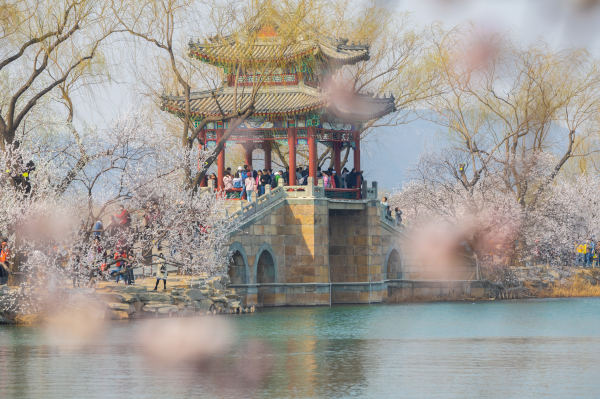
Explore ancient temples, palaces, and UNESCO World Heritage sites
Throughout China, travelers can discover a wealth of ancient temples, grand palaces, and UNESCO World Heritage sites that bear witness to the country’s rich history and cultural heritage.
Whether it’s wandering through the sacred halls of the Forbidden City in Beijing, marveling at the intricate carvings of the Longmen Grottoes in Luoyang, or tracing the footsteps of pilgrims at the ancient Buddhist caves of Dunhuang, each site offers a window into China’s storied past and architectural marvels.
Guided tours provide invaluable insights into the significance and symbolism of each site, revealing the stories of emperors, scholars, and artisans who shaped China’s history and culture.
From the imperial splendor of the Summer Palace to the timeless tranquility of the Shaolin Temple, cultural heritage tours offer a journey through the ages and a deeper appreciation for China’s enduring legacy.
Guided Tours: Unveiling the Stories
Opting for a guided cultural heritage tour offers several advantages:
- Expert Knowledge: Gain valuable insights from knowledgeable guides who can explain the history, significance, and cultural context of the sites you visit.
- Hidden Gems: Discover lesser-known historical sites and cultural experiences that may not be found on your own.
- Logistical Support: Benefit from the convenience of pre-arranged transportation, entrance fees, and itinerary planning, allowing you to relax and focus on the experience.
Remember:
- Respect the cultural significance of the sites you visit. Dress modestly, be mindful of noise levels, and follow any specific guidelines posted at each location.
- Engage with your guide and ask questions. Curiosity is your best tool to gain a deeper understanding of China’s cultural heritage.
- Embrace the opportunity to experience the present alongside the past. As you explore historical sites, don’t forget to observe and appreciate the daily life and cultural nuances of modern China.
🧧 Use our free “ChinaGoGuide” app. Your personal guide to your journey to China. Try it now!
Flower Markets and Festivities
Spring in China is a riot of color and fragrance, with flower markets springing up in cities and towns across the country, offering a feast for the senses. These bustling markets are filled with vibrant blooms, from cherry blossoms and peonies to tulips and azaleas, creating a kaleidoscope of colors and scents that delight visitors and locals alike.
Strolling through these lively markets, travelers can immerse themselves in the sights and sounds of spring, admiring the beauty of nature in full bloom and discovering unique varieties of flowers to brighten their homes and hearts.
Participate in flower-themed festivals and events
In addition to flower markets, spring in China also brings a variety of flower-themed festivals and events that celebrate the beauty and symbolism of blooms. From the famous Peach Blossom Festival in Guilin to the Cherry Blossom Festival in Wuhan, these events offer a unique opportunity to experience the cultural significance of flowers and immerse oneself in the festive atmosphere of springtime celebrations.
Visitors can enjoy a range of activities, including flower exhibitions, art displays, live performances, and traditional rituals that pay homage to the arrival of spring.
Tips for Buying and Caring for Fresh Flowers
- Choose healthy blooms: Look for flowers with vibrant colors, firm buds, and fresh, green stems. Avoid flowers with wilted petals, browning leaves, or visible signs of insect damage.
- Ask about care instructions: Consult with the vendor about the specific care needs of your chosen flowers. Different varieties have varying water requirements, light preferences, and storage tips.
- Travel considerations: If purchasing flowers as souvenirs, be mindful of travel restrictions and regulations regarding the import of plant materials into your home country.
- General care tips: Upon reaching your destination, immediately re-cut the stems at an angle and place them in a clean vase filled with fresh, cool water. Keep the flowers away from direct sunlight and heat sources. Change the water regularly and trim the stems every few days to prolong their lifespan.
Birdwatching Excursions
China’s vast and varied landscapes are home to a rich diversity of bird species, making it a paradise for birdwatching enthusiasts. From migratory birds to endemic species, China offers a wealth of opportunities to observe feathered friends in their natural habitats, from misty mountains and lush forests to wetlands and coastal areas.
Whether you’re a seasoned birder or a novice enthusiast, exploring China’s birdwatching hotspots promises unforgettable encounters with some of the most captivating and elusive avian species on the planet.
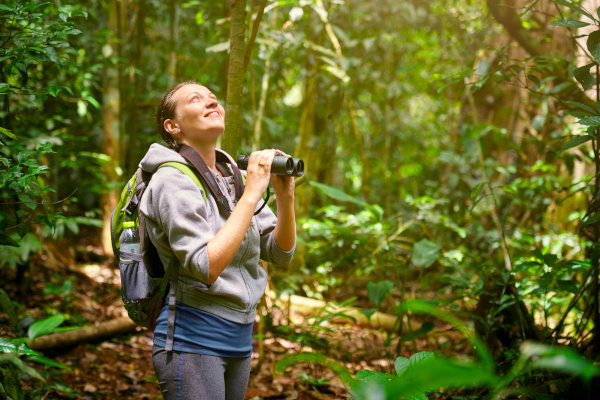
Birdwatching Hotspots
Qinghai Lake: It is widely renowned as China’s largest inland lake. This Ramsar Site and UNESCO World Heritage Site is a haven for migratory birds. Witness massive flocks of Bar-headed Geese, Brown-headed Gulls, and Black-headed Ibis gather on the lake during spring and autumn migrations.
Sichuan Province: Home to over 700 bird species, Sichuan is a paradise for birdwatchers. Explore the Wolong National Nature Reserve to spot the Giant Panda and the rare Sichuan Woodpecker.
Xishuangbanna National Park![]() : Nestled in the heart of Yunnan Province, this tropical rainforest boasts over 600 bird species. Look for the colorful Green-billed Pitta, the elusive Rufous-necked Hornbill, and the dazzling Blue-throated Barbet.
: Nestled in the heart of Yunnan Province, this tropical rainforest boasts over 600 bird species. Look for the colorful Green-billed Pitta, the elusive Rufous-necked Hornbill, and the dazzling Blue-throated Barbet.
Yancheng National Park![]() : Located along the coast of Jiangsu Province, this park is a crucial stopover point for migratory birds. Witness the majestic Oriental White Stork, the endangered Chinese Crested Tern, and the elegant Nordmann’s Greenshank.
: Located along the coast of Jiangsu Province, this park is a crucial stopover point for migratory birds. Witness the majestic Oriental White Stork, the endangered Chinese Crested Tern, and the elegant Nordmann’s Greenshank.
Guided Tours
Birdwatching tours led by experienced guides offer numerous advantages:
- Expert knowledge: Gain valuable insights into local birdlife, their habitats, and behavior from knowledgeable guides.
- Accessibility: Access remote areas and hidden birding spots with the help of local guides who are familiar with the terrain.
- Equipment and logistics: Benefit from the convenience of having essential birding equipment like binoculars and telescopes readily available, and enjoy pre-arranged transportation and accommodation.
Equipment and Etiquette Tips for a Rewarding Birdwatching Experience
Here’s a basic checklist for your birdwatching excursion:
- Binoculars: Choose a comfortable pair of binoculars with at least 8x magnification and good light-gathering capacity. (Aff.link)
- Field guide: Invest in a reliable field guide specific to the region you’re visiting, containing detailed descriptions and illustrations of local bird species. (Aff.link)
- Journal and camera: Note down your sightings and capture memorable photos of the birds you encounter. (Aff.link)
- Comfortable clothing and footwear: Dress appropriately for the weather and terrain, opting for comfortable clothing and sturdy shoes suitable for walking or hiking.
Etiquette Tips:
- Respect the environment: Practice responsible eco-tourism by minimizing your impact on the natural habitat. Avoid littering, stay on designated trails, and maintain a safe distance from birds to avoid disturbing them.
- Be mindful of other birdwatchers: Maintain a respectful distance from other birders and avoid loud noises that could disrupt their observations.
- Follow local regulations: Be aware of and adhere to any specific regulations or restrictions regarding birdwatching activities in the area you’re visiting.
Related reading: 7 Winter Activities in China for Every Traveler – Opens in new tab
Outdoor Tai Chi Sessions
In the tranquil setting of China’s parks and public squares, the ancient practice of Tai Chi offers a serene oasis for travelers seeking inner peace and harmony amidst the hustle and bustle of city life.
Rooted in traditional Chinese martial arts and philosophy, Tai Chi combines slow, graceful movements with deep breathing and meditation (often referred to as “moving meditation”) techniques to cultivate physical strength, mental clarity, and spiritual well-being.

Join locals in parks and public squares for morning exercises
Each morning, parks and public squares across China come alive with the gentle movements of Tai Chi practitioners, young and old, gathering to start their day with mindful exercise and meditation.
Whether it’s the tranquil gardens of the Temple of Heaven in Beijing, the scenic riverside promenades of Shanghai’s Bund, or the historic courtyards of the Forbidden City, Tai Chi enthusiasts gather in communal spaces to practice their forms and share in the collective energy of the group.
Joining locals for a morning Tai Chi session offers travelers a unique opportunity to immerse themselves in the local culture and connect with the community in a meaningful way. Beginners are welcome to observe and participate at their own pace, guided by the gentle encouragement of experienced practitioners who are often happy to share their knowledge and expertise with newcomers.
Beginner-friendly Tai Chi classes
For travelers interested in delving deeper into the practice of Tai Chi, many cities in China offer beginner-friendly classes and workshops led by experienced instructors. These classes provide a structured introduction to the fundamental principles and movements of Tai Chi, allowing participants to learn at their own pace in a supportive and encouraging environment.
Additionally, many hotels and resorts in China also offer Tai Chi classes as part of their wellness and fitness programs, providing guests with the opportunity to start their day with a rejuvenating session of mindful movement and meditation.
Beginner’s Tips:
- Wear comfortable clothing and shoes: Opt for loose-fitting clothing that allows for easy movement and comfortable shoes suitable for walking on various surfaces.
- Arrive early: Popular locations can get crowded, especially during the cooler morning hours. Arriving early allows you to find a suitable spot and observe others before joining in.
- Stay hydrated: Bring a water bottle to stay hydrated throughout the session, especially during warmer weather.
- Respectful Practice: Be mindful of your surroundings and observe proper etiquette by maintaining a respectful distance from others and keeping noise levels low.
Planning & Practicalities
Spring is a delightful season to visit China, with mild temperatures, blooming flowers, and a host of cultural festivals and outdoor activities to enjoy. The best time to visit depends on your preferences and the regions you plan to explore.
In northern China, spring arrives later, typically in April and May, while southern regions experience warmer weather and earlier blooms. Be sure to check the weather forecast and plan your itinerary accordingly to make the most of your springtime adventure in China.
Visa & Travel Requirements: Essential Information for a Smooth Journey
Before traveling to China, it’s essential to familiarize yourself with the visa and travel requirements to ensure a smooth and hassle-free journey.
Most travelers to China require a visa, which can be obtained from Chinese embassies and consulates in your home country or through authorized visa agencies. Depending on your nationality, you may also be eligible for visa-free entry or visa-on-arrival programs for short stays in certain regions.
In addition to a valid visa, travelers should ensure they have a valid passport with at least six months’ validity remaining, as well as any necessary vaccinations and health documentation required for entry into China. It’s also a good idea to purchase travel insurance to cover unexpected medical expenses, trip cancellations, and other emergencies while abroad.
Related reading: “Cash carrying Rules to Enter/Exit in China“
Transportation Options: Navigating China’s Efficient Network
China boasts an extensive and efficient transportation network that makes it easy to travel between cities and regions. From high-speed trains and long-distance buses to domestic flights and local transportation systems, there are plenty of options for getting around during your springtime adventure in China.
High-speed trains are a popular choice for long-distance travel, offering comfort, convenience, and speed, while buses provide affordable options for reaching destinations off the beaten path.
Within cities, public transportation systems such as subways, buses, and taxis make it easy to navigate urban areas and explore local attractions. Many cities also offer bike-sharing programs, allowing travelers to pedal their way around town and experience the sights and sounds of China at their own pace.
Accommodation Choices: From Boutique Hotels to Traditional Homestays
When it comes to accommodation, China offers a wide range of options to suit every budget and preference. From luxury hotels and boutique guesthouses to traditional courtyard homes and homestays, there’s something for everyone in China’s diverse hospitality landscape.
In major cities like Beijing, Shanghai, and Guangzhou, travelers will find a plethora of international hotel chains and upscale accommodations with modern amenities and services.
For a more authentic and immersive experience, consider staying in a traditional courtyard hotel or homestay in a historic neighborhood or rural village. These charming accommodations offer a glimpse into local life and culture, with warm hospitality, home-cooked meals, and opportunities to interact with locals and learn about their traditions and customs.
Remember:
- Research and book accommodation in advance, especially during peak travel seasons and popular destinations.
- Consider your location: Choose accommodations near public transportation hubs or attractions based on your itinerary and travel style.
- Read reviews and compare prices: Utilize online resources and booking platforms to find the best fit for your needs.
By carefully considering these planning and practical aspects, you can ensure a smooth and enjoyable springtime adventure in China.
🧧 Use our free “ChinaGoGuide” app. Your personal guide to your journey to China. Try it now!
Conclusion
Spring in China unfolds like a breathtaking tapestry, offering a kaleidoscope of experiences for travelers seeking cultural immersion, natural wonders, and personal rejuvenation.
From the vibrant hues of flower markets and the captivating melodies of traditional music to the serenity of outdoor Tai Chi sessions and the historical echoes of ancient temples, China in springtime presents a unique opportunity to connect with the country’s rich heritage, diverse landscapes, and the welcoming spirit of its people.
Whether you’re captivated by the gentle flow of Tai Chi in a serene park, the thrill of birdwatching amidst diverse ecosystems, or the captivating energy of temple fairs, there’s something truly special waiting to be discovered in China during the spring season.
So, pack your curiosity, embrace the spirit of adventure, and embark on your own unforgettable journey through the wonders of China’s vibrant spring. As the ancient proverb says, “A journey of a thousand miles begins with a single step,” and the first step towards an extraordinary springtime adventure in China awaits you.
Related reading: Summer Vacations in China: Best Places to Visit – Things to Do – Travel Tips – Opens in new tab
Stay in Touch
 Join our newsletter by using the forms on this website or click here!
Join our newsletter by using the forms on this website or click here! Follow us on Google News
Follow us on Google News Follow us on Facebook
Follow us on Facebook
Feature Image from Depositphotos

